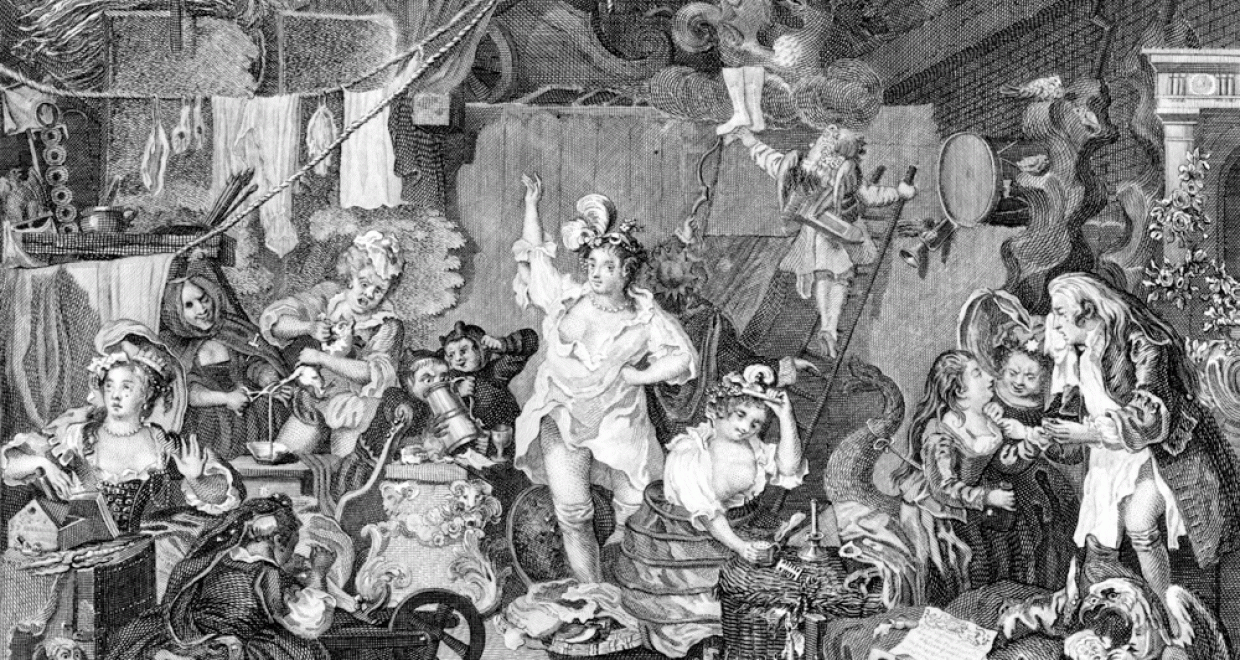Behind the scenes at Sheridan’s Drury Lane
The latest issue of Theatre Survey includes ‘Competition and Community: Mary Tickell and the Management of Sheridan’s Drury Lane’, by Robert W. Jones, Senior Lecturer in English Literature at the University of Leeds. This paper explores the ins and outs of theatre management in the late eighteenth-century through the witty and revelatory letters of Mary Tickell to her sister Elizabeth Sheridan.
More sweet, Maria, was thy plaintive Strain:
That strain is o’er – but Mem’ry ne’er shall fade,
When erst it cheer’d grey Twilight’s Shade,
And charm’d the sorrow-stricken Soul from Pain;
Still, still melodious Maid, thy dulcet Song,
Shall breathe immortal on an Angel’s Tongue.These lines, written by the poet Mary Robinson, commemorate the life and brief career of Mary Tickell (née Linley, 1758-1787).[1] Tickell was the daughter of the composer and music director Thomas Linley and the younger sister of Elizabeth Sheridan, wife of the playwright and politician Richard Brinsley Sheridan. When, in 1772, Elizabeth and Mary had been painted by Gainsborough (the picture that appears on the cover of Theatre Survey) they were at the height of their fame. Both women sang on the stage at London, Bath and Oxford. As Gainsborough’s portrait makes plain they were also strikingly beautiful, making them celebrities as much as performers. Their careers came to an end, however, on Elizabeth’s marriage to Sheridan, whose gentlemanly pretensions demanded that neither his wife nor his sister in law appear on stage. Neither sang again in public.
Prior to my research, their story had seemed to be that of talent extinguished by heavy-handed propriety. My article challenges that perception. By examining nearly a hundred of Mary’s letters to her sister (now in the Folger Shakespeare Library), I have been able to reveal how Tickell contributed, albeit unofficially, to the art and culture of late eighteenth-century Britain.
The letters are not properly dated (Tickell often wrote merely ‘Thursday’), so I spent several pleasurable weeks working out when they had been written. Once I had a good sense of the dates, it was obvious that Tickell provided a new and revealing perspective on life at the Theatre Royal Drury Lane, a theatre co-owned by Sheridan and Linley.
With such connections Tickell was able to attend performances, rehearsals and staff meetings. She could also, or so she felt, issue orders and offer advice to the professionals who worked there. Tickell narrates these events and her own part in them with some shrewdness. She tells her sister which plays were proving lucrative and which merely expensive; she also reveals who amongst the company is proving difficult – refusing to act, or claiming illness.
She provides neat reviews of performers, such as Dorothy Jordan who made her debut in October 1785. Tickell was rather calculating about Jordan, noting that ‘she is a treasure to us’ and meaning it literally: Jordan would indeed swell Drury Lane’s coffers, not least when she appeared cross dressed. Tickell writes, half comically, about the actor William Brereton’s descent into madness, a calamity that ended with his crazed performance in Macbeth. She relates too how the repertoire was decided on a sometimes ad hoc basis as the management adjusted the theatre’s offering in order to maximise profits, defeat the rival theatre in Covent Garden, or simply to cover staff illness. Sarah Siddons, the great star of Drury Lane, is a great cause of worry in this respect. Tickell was often obliged to tell her sister that Siddons was poorly or pregnant, and consequently causing consternation behind the scenes.
It was exciting to discover this amount of detail about Drury Lane, much of which was previously unknown to scholars. Her writing is witty but meticulous, setting everything out so that her sister is minutely informed. Crucially, Tickell’s letters provide a new perspective on theatrical and professional life at Drury Lane. She offers insight into what I term the ‘domestic life’ of the theatre, the ins and outs of the company, its habits of dining and celebration, but also how decisions about the repertoire were made. We are beginning to get a fuller picture of how theatres were run in the eighteenth century, especially in relation to the lives of performers. What Tickell transforms is our knowledge of day-to-day management, not least of which is the struggle to secure revenue. She also reveals just how much Drury Lane was a family business, co-run by the Linleys and Sheridans with help from the Tickells. This material is wholly new and represents a thrilling addition to our knowledge of how eighteenth-century theatres were operated. Perhaps just as importantly, study of Tickell’s correspondence reveals that her career did not end when she left the stage, rather her energies were recreated and redirected within the familial management of the theatre. In this role she remained a star, one whom historians can now commemorate.
[1]Mary Robinson, ‘Sonnet, to the Death of Miss Maria Linley’, The Works of Mary Robinson, 8 vols, general editor William D. Brewer (London: Chatto and Pickering, 2009), I, 67.
To read this paper free of charge for a limited period, click here.
Featured image – Behind the Scenes with an Acting Troop, by William Hogarth.






